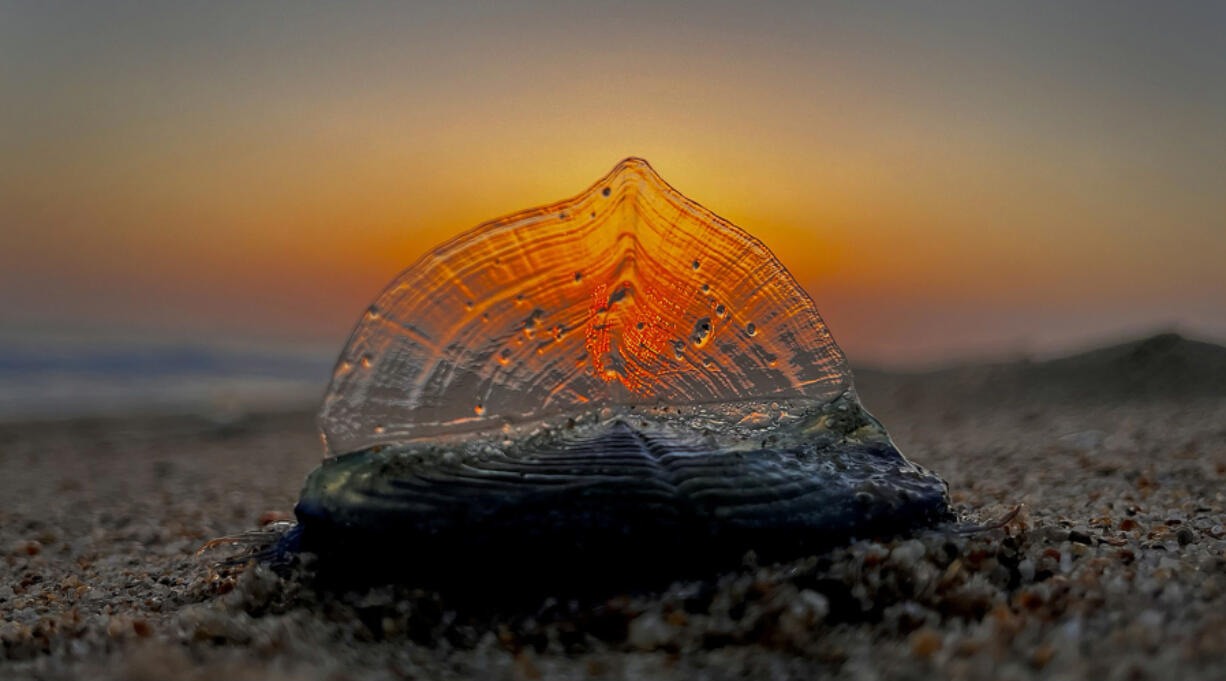Strange springtime visitors — gelatinous sea creatures known as by-the-wind sailors, or Velella velellas — are arriving by the thousands on Bay Area beaches. Expect to see them sail onto Southern California beaches soon.
The small jellyfish-like critters have a deep blue hue and a sail that allows them to glide on the ocean’s surface. When they beach themselves, they lose their pigment and dry out. But don’t worry, they don’t sting humans like jellyfish.
A spike in population triggered by warming waters causes massive amounts of the animals to wash ashore at this time of year. Although they haven’t been spotted on Southern California beaches so far this year, an expert from the Aquarium of the Pacific expects them to show up in a matter of months.
“By kind of random luck, if the winds are going the right way and the currents are going the right way, all these guys are going to get blown to the beach,” said Josh Wagner, who works with sea jellies at the aquarium in Long Beach. “They’re basically at the mercy of the winds with that big sail on top.”
When the ocean warms up in the spring, more nutrients become available in the water and it leads to a big reproduction of Velella velellas, Wagner said. Human-caused climate change may also contribute to an increase in their numbers as the ocean gets warmer, he said.
“Climate change is going to accelerate these processes because it is going to get warmer earlier, which will cause the increase in nutrients,” Wagner said.
By-the-wind sailors are not true jellyfish, he said, although they are related. Each blue “raft” consists of multiple organisms with a specialized function, like feeding and reproduction. Before they adhere to the ocean’s surface, they live underwater as tiny creatures known as medusae, Wagner said.
Although beached by-the-wind sailors die in great numbers, they most probably have already reproduced and left thousands of medusae in the sea, according to Wagner.
“It doesn’t cut a dent in their population,” he said of the beaching phenomenon. The creatures don’t show up on the beach every year, but they have more often than not in recent years.
Wagner advises beachgoers to avoid touching washed up sea creatures in case they turn out to be Portuguese man-of-wars, which can leave a sting.



